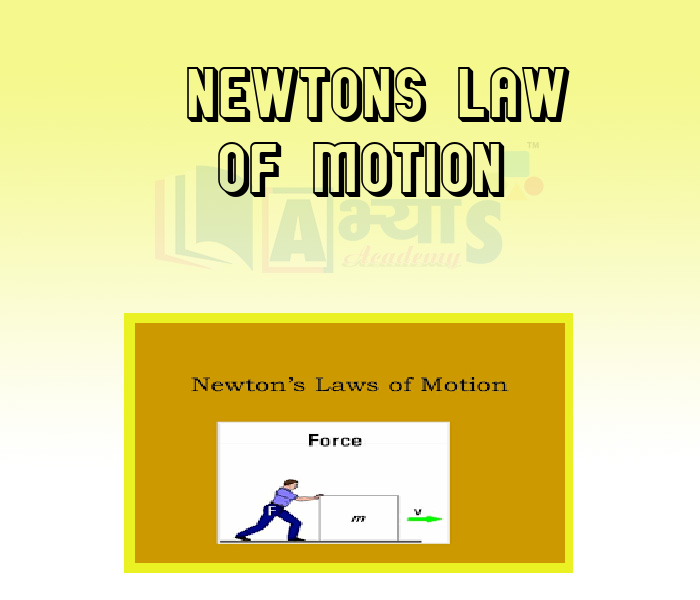Newtons Law of Motion












Newtons Law of Motion
From the Galileo's experiment we have inferred that
1. If a body is at rest and no external unbalanced force is applied the body will remain at rest.
2. If a body is in motion and no external unbalanced force is applied the body will remain in motion.
3. If an unbalanced force acts on a body its velocity will change.
These ideas we formulated into laws by Newton. Newton's laws of motion are three physical laws that, together, laid the foundation for explanation of motion. They describe the relationship between a body and the forces acting upon it, and its motion in response to those forces. There are three laws of motion:
Newton's First Law of the Motion
A body at rest will remain at rest and a body in motion will remain in uniform motion along a straight line unless an external unbalanced force is applied on it. This law is also called law of inertia.
Examples
(i) When a carpet or a blanket is beaten with a stick then the dust particles separate out from it.
(ii) If a moving vehicle suddenly stops then the passengers inside the vehicle bend forward.
Newton's Second Law of Motion:
The rate of change of linear momentum is proportional to the applied force and change in momentum takes place in the direction of the applied force.
Examples:
(i) It is easier for a strong adult to push a full shopping cart than it is for baby to push the same cart.
(ii) It is easier for a person to push an empty shopping cart than a loaded one.
Newton's Third Law of Motion:
The third law says that forces always exist in action reaction pairs. For any force exerted by one body on the other, the second body exerts an equal and opposite force called reaction on the first body.. So the law states that
For every action there is equal and opposite reaction and both acts on two different bodies.
Mathematically
Examples:
(i) Swimming becomes possible because of the third law of motion.
(ii) Jumping of a man from a boat on to the bank of a river.
When a carpet or a blanket is beaten with a stick then the dust particles separate out from it. It is an example of which law of motion ? | |||
| Right Option : D | |||
| View Explanation | |||
Who provided a basis for the study of dynamics? | |||
| Right Option : B | |||
| View Explanation |
Students / Parents Reviews [10]
It has a great methodology. Students here can get analysis to their test quickly.We can learn easily through PPTs and the testing methods are good. We know that where we have to practice

Barkha Arora
10thAbhyas Methodology is very good. It is based on according to student and each child manages accordingly to its properly. Methodology has improved the abilities of students to shine them in future.

Manish Kumar
10thI have spent a wonderful time in Abhyas academy. It has made my reasoning more apt, English more stronger and Maths an interesting subject for me. It has given me a habbit of self studying

Yatharthi Sharma
10thMy experience with Abhyas academy is very good. I did not think that my every subject coming here will be so strong. The main thing is that the online tests had made me learn here more things.

Hiya Gupta
8thIt was a good experience with Abhyas Academy. I even faced problems in starting but slowly and steadily overcomed. Especially reasoning classes helped me a lot.

Cheshta
10thIt was good as the experience because as we had come here we had been improved in a such envirnment created here.Extra is taught which is beneficial for future.

Eshan Arora
8thMy experience with Abhyas is very good. I have learnt many things here like vedic maths and reasoning also. Teachers here first take our doubts and then there are assignments to verify our weak points.

Shivam Rana
7thOne of the best institutes to develope a child interest in studies.Provides SST and English knowledge also unlike other institutes. Teachers are co operative and friendly online tests andPPT develope practical knowledge also.

Aman Kumar Shrivastava
10thAbhyas is a complete education Institute. Here extreme care is taken by teacher with the help of regular exam. Extra classes also conducted by the institute, if the student is weak.

Om Umang
10thMy experience was very good with Abhyas academy. I am studying here from 6th class and I am satisfied by its results in my life. I improved a lot here ahead of school syllabus.
